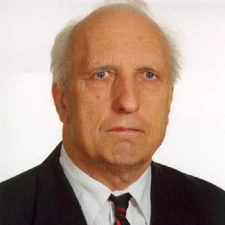Agris Gailitis

The 2016 Petrus Peregrinus Medal is awarded to Agris Gailitis in recognition of his wide-ranging contributions to magnetohydrodynamics including the conception and realisation of the world’s first laboratory self-exciting fluid dynamo in Riga.
It is now generally accepted that the Earth’s magnetic field is driven by dynamo action in the liquid metal core. However, until the year 2000, fluid dynamos were an entirely theoretical construct, based on the solutions of mathematical equations. Agris Gailitis turned theory into reality with the Riga dynamo experiment. This was the first laboratory experiment in which a sustained magnetic field was generated by dynamo action in a liquid metal. This experiment, together with the almost simultaneous multiscale Karlsruhe dynamo experiment, has represented a landmark within theoretical magnetohydrodynamics. The success of laboratory experiments has greatly increased confidence in the essential correctness of the dynamo hypothesis as the origin of geomagnetism. Gailitis began his career by devising several kinematic dynamo models that self-excited magnetic field, including one consisting of submerged jets and another that operated with two identical submerged and coaxial vortex rings. The latter provided a good example demonstrating that, although axisymmetric magnetic field is forbidden by Cowling’s theorem, axisymmetric fluid motions could sustain a magnetic field. Gailitis early recognised the potential of the Ponomarenko dynamo as a laboratory realisation of a homogeneous dynamo and began the study of the concept in the late 60s. With the publication of Ponomarenko’s work in 1973, Gailitis’ project took off. The design of the experiment reflected his deep understanding of theoretical dynamo models. He spent considerable time modifying Ponomarenko’s infinite cylinder to a finite and realisable one, and then properly characterised the expected critical magnetic Reynolds number. Twenty-five years of development followed until finally, in November 1999, the self-excitation of a magnetic field could be observed for the first time. The tenacity shown by Gailitis is without equal. He has also shared his experience and understanding with others, so he has made a sustained impact on the development of experimental dynamos. The works underway in Maryland, Grenoble, Madison, Rossendorf and Zurich owe a great deal to the proof of concept of the Riga dynamo.
